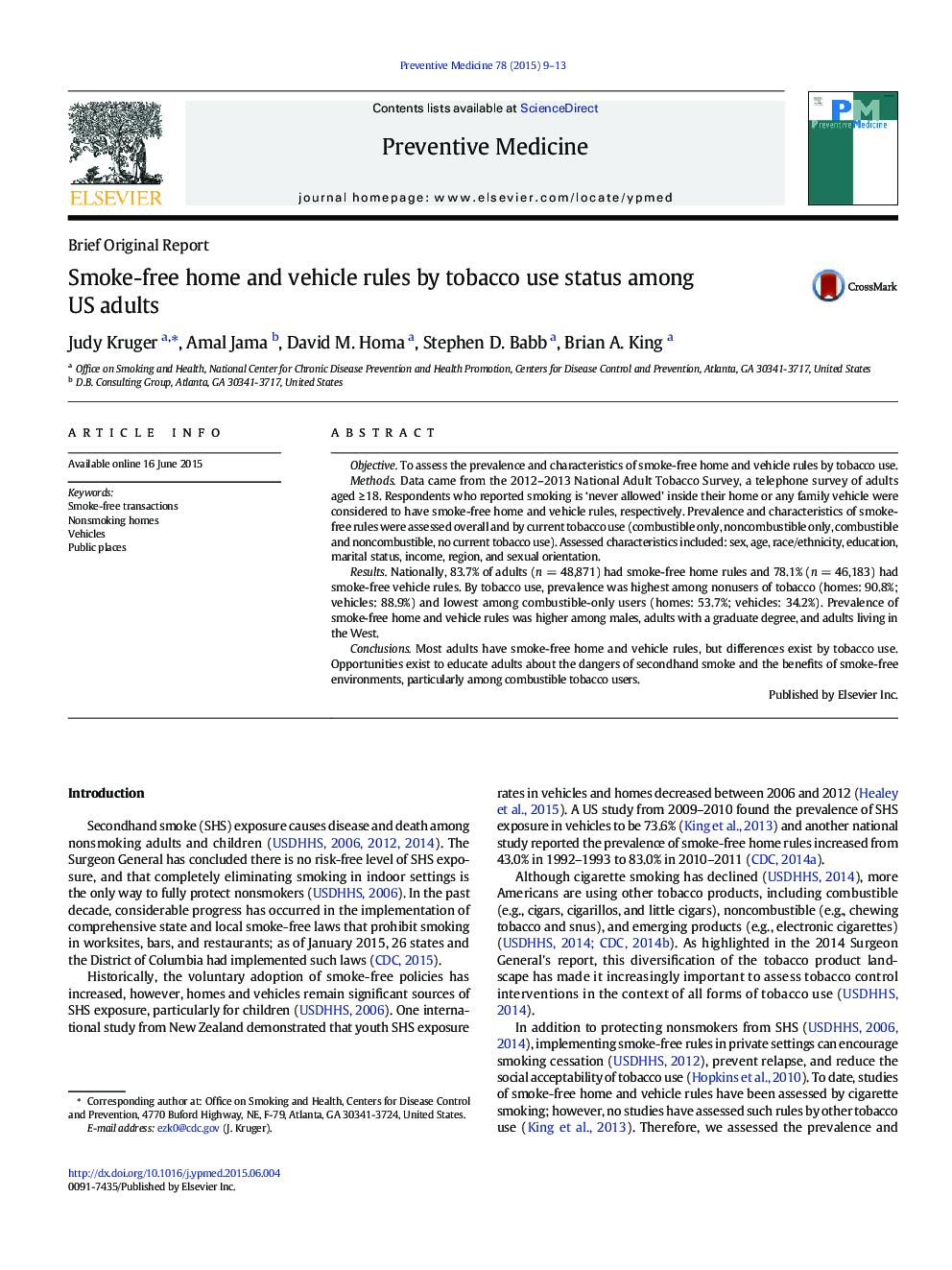| کد مقاله | کد نشریه | سال انتشار | مقاله انگلیسی | نسخه تمام متن |
|---|---|---|---|---|
| 3100415 | 1581636 | 2015 | 5 صفحه PDF | دانلود رایگان |
• We assessed smoke-free home and vehicle rule prevalence by tobacco use status.
• National support for smoking restrictions in private homes and vehicles exists.
• Difference in the prevalence of smoke-free rules was apparent by tobacco use status.
• Findings identified disparity in voluntary smoke-free rules in private settings.
• Implementation of smoke-free rules may help reduce exposure to secondhand smoke.
ObjectiveTo assess the prevalence and characteristics of smoke-free home and vehicle rules by tobacco use.MethodsData came from the 2012–2013 National Adult Tobacco Survey, a telephone survey of adults aged ≥ 18. Respondents who reported smoking is ‘never allowed’ inside their home or any family vehicle were considered to have smoke-free home and vehicle rules, respectively. Prevalence and characteristics of smoke-free rules were assessed overall and by current tobacco use (combustible only, noncombustible only, combustible and noncombustible, no current tobacco use). Assessed characteristics included: sex, age, race/ethnicity, education, marital status, income, region, and sexual orientation.ResultsNationally, 83.7% of adults (n = 48,871) had smoke-free home rules and 78.1% (n = 46,183) had smoke-free vehicle rules. By tobacco use, prevalence was highest among nonusers of tobacco (homes: 90.8%; vehicles: 88.9%) and lowest among combustible-only users (homes: 53.7%; vehicles: 34.2%). Prevalence of smoke-free home and vehicle rules was higher among males, adults with a graduate degree, and adults living in the West.ConclusionsMost adults have smoke-free home and vehicle rules, but differences exist by tobacco use. Opportunities exist to educate adults about the dangers of secondhand smoke and the benefits of smoke-free environments, particularly among combustible tobacco users.
Journal: Preventive Medicine - Volume 78, September 2015, Pages 9–13
